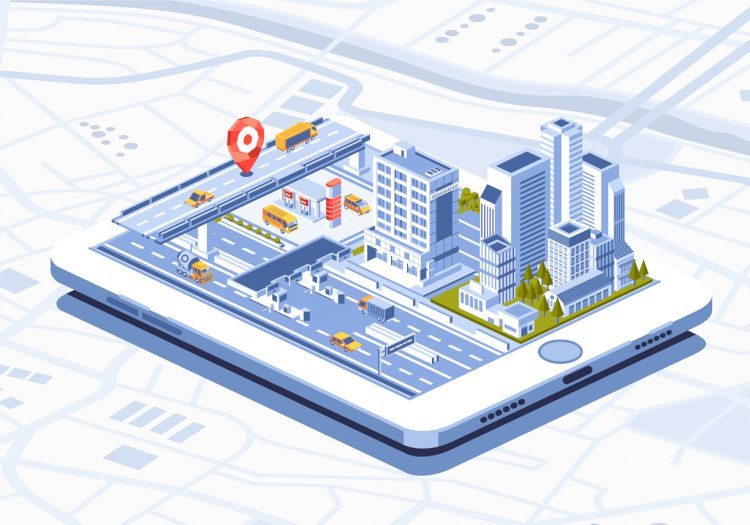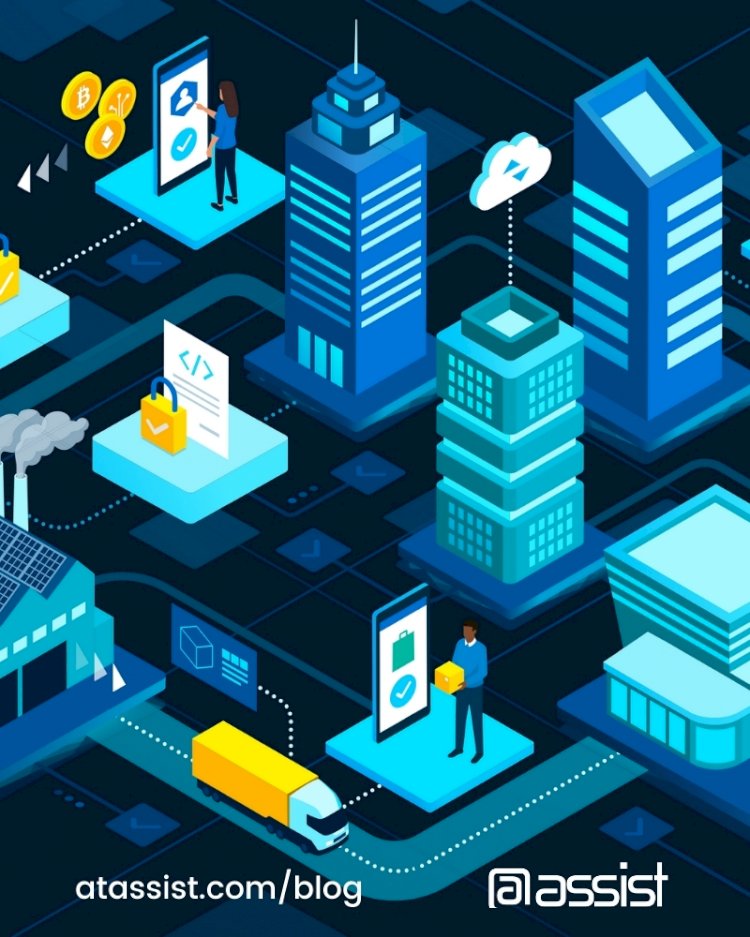5 Components of a Successful Smart City
If there’s anything that the whirlwind of the past few years has taught us, it’s that our delicate urban spaces need to be reworked to sustain the unpredictability of global change. Cities must continue to function through unprecedented times to maintain whatever sliver of normalcy can be salvaged during major economic, social, and global transformations.

If there’s anything that the whirlwind of the past few years has taught us, it’s that our delicate urban spaces need to be reworked to sustain the unpredictability of global change. Cities must continue to function through unprecedented times to maintain whatever sliver of normalcy can be salvaged during major economic, social, and global transformations. However, it’s difficult to be proactive in situations that are hard to predict. And, when accurate predictions are near-impossible, leaders need to act quickly to choose the best course of action for our communities and the globe as a whole.
Smart city projects have popped up over the past few years, primarily as innovations aimed to create jobs and boost the economy. Sidewalk Labs, a Google sister company, began collaborating with Water Front Toronto in 2017 to develop a smart community that was set to reinvent the Toronto waterfront neighbourhood of Quayside. This new tech-centered development would include self-driving taxi-bots and buses, waste removal robot vehicles, weather mitigation systems, and wood-composite modular buildings.
These big ideas of the Quayside project were halted in May of 2020. The company's reasoning was that economic uncertainty could not allow the project to continue. But, experts and citizens alike had different opinions. Political concerns arose almost instantly after the inception of the project. Citizens were concerned about gentrification, ubiquitous governance strategies that combined privatization with government legislation, and ultimately, the threat to democracy. Their concerns were understandable as not one Toronto resident was provided with the opportunity to vote on this agreement.
This is just one instance in which the concept of a smart city has failed. However, technology is still considered a viable option to increase the efficiency and interconnectedness of our cities. Ultimately, the failure of this project was largely due to economic changes and a lack of public support. So, how do smart city developers and managers gain public approval and create a successful smart development?
Work With the People, For the People

Listening to residents’ needs and concerns before diving into a smart city development project is crucial. Ultimately, the neighbourhoods in question need to be livable for current residents. They should provide solutions to pre-existing problems and make daily life easier, not more complex.
When developers consider what residents need most from their neighbourhoods and seek to achieve these needs in an equal and accessible way, they ensure that people come first, not technology. This also means developing solutions that are accessible to everyone in the community, not just those with tech-savvy backgrounds or the wealth needed to participate.
Accessibility and consideration are some of the first steps in building a genuine relationship with the people of the communities developers are looking to advance. This relationship is crucial. Smart city planners cannot expect residents to accept big changes in their neighbourhoods or cities without involvement in the process and decision-making. Taking this people-first approach avoids pushing technology into communities that don’t see an overarching benefit. Starting small and looking locally at the issues specific to a community is a vital first step in successful smart city development.
Be Transparent
This obvious but often undervalued point works hand in hand with building people-first smart cities. Public and private sectors must ensure honesty and transparency with residents. How can you develop trust without transparency? Again, prioritizing citizens' needs is key. From open information on data sharing to inclusive decision-making, there are many ways city leaders can maintain transparency with residents. City leaders foster a sense of community when they are open with residents and work to integrate community members into the decision-making process.
Grid Modernization

Honesty is an integral part of building public trust in a smart city, but of course, the technology behind the city itself is important too. A modernized electric grid is a necessary component of a smart city. When working from the ground up, the electric infrastructure of a city must be stable enough to support intricate telecommunications, transportation systems, and smart buildings. These systems will set the groundwork for loT and AI required to collect, organize, and send data in a functioning smart city. This exemplifies how cities need to consider the basic elements of their infrastructure before jumping directly into smart city solutions. A basis of accurate and reliable sensors, computers, and communications technology will make the technical side of smart city implementation much smoother.
Determine Strong Leadership, Policy, and Regulation
In many countries across the world, governments have yet to work closely with technology in the ways that smart city developers propose. But others have proven it’s very attainable. Developing policy on data use and distribution, creating timeframes for implementation and awareness, and ensuring third-party regulation are just a few ways policymakers and governments can work appropriately with new technology.
The 2021 World Economic Forum White Paper on Smart City Governance suggests that cities have clear organizational values concerning privacy and data use. Countries across the world have different values that should be considered upon implementing smart city policies. Again, looking locally at the ways technology can assist one region proves highly beneficial. Establishing data transparency policies and cybersecurity accountability allows residents to better understand what aspects of their data are shared with authorities and how this can benefit them, which is likely to garner more trust in the system.
Center Sustainability in Smart Developments

Building a smart city should not just be a way to push technology forward. Without the preservation of ecosystems and the natural environment, urban spaces will quickly crumble. Research has indicated a strong correlation between a city’s environmental performance and its prosperity. As climate change progresses, financial, health, and safety risks increase. A sustainable smart city that works to create green infrastructure, transportation, land use, and policy, is proactive in mitigating these risks. Having sustainable policy at the forefront of smart city design ensures that cities are developed with the future and well-being of our planet in mind.
Tracking water use, waste management, energy data, and more are all important elements in creating a sustainable city. Smart city management solutions like Tomo provide city leaders and residents with easy-to-use software that allows them to track their sustainability and make smart decisions.
The Smart City Management Solution
With the advancement and increasing popularity of technology, city leaders must be able to integrate new tech solutions into their cities to boost efficiency, increase the safety of residents and the city, and help residents make decisions that impact their daily lives.
With Tomo, you can learn more about what goes on in your city in real-time and would be beneficial to both the government and its residents to make smart choices to improve their lives by creating solutions that are built around people and not technology. Read more about Tomo.

 contact@atassist.com
contact@atassist.com 





